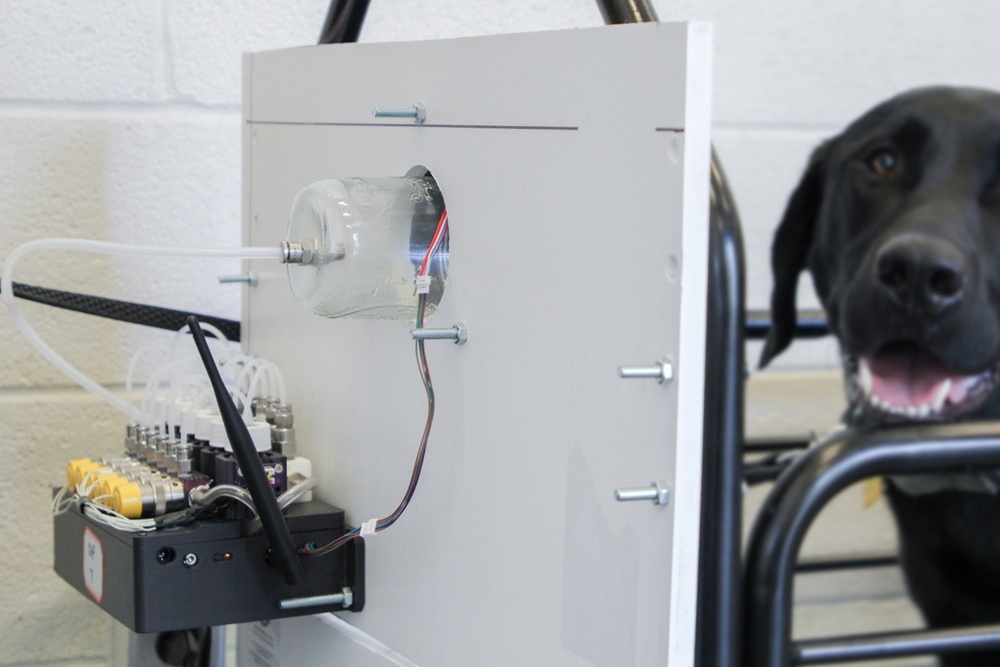Nose Know-How: How IronDog Reveals the Incredible Superpowers Hiding in a Dog's Snout
Science
2025-04-14 17:49:00Content

Unleashing the Superhero Sense: The Incredible World of Canine Smell
Imagine possessing a superpower so extraordinary that it could detect hidden dangers from miles away. For dogs, this isn't science fiction—it's their everyday reality. A dog's sense of smell is nothing short of miraculous, a natural ability so powerful that it has become an indispensable tool for military and law enforcement agencies worldwide.
Scientists refer to this remarkable capability as "canine olfaction," a sensory skill that far surpasses human perception. While humans rely primarily on vision, dogs navigate and understand their world through an intricate network of scent molecules that tell complex stories invisible to the naked eye.
Traditionally used for detecting explosives, narcotics, and other hazardous materials, canine olfaction remains a fascinating yet under-researched domain. Recognizing this knowledge gap, researchers at the U.S. Army Combat Capabilities Development Command Chemical Biological Center (DEVCOM CBC) have launched an innovative project called IronDog, aimed at unraveling the mysteries behind these four-legged sensory superheroes.
As scientists delve deeper into understanding the extraordinary capabilities of dogs' noses, we're reminded that sometimes the most incredible technologies are not invented, but have been walking beside us all along.
Unleashing the Extraordinary: How Canine Olfaction is Revolutionizing Scientific Detection
In the intricate world of scientific discovery, some of the most remarkable breakthroughs come from unexpected sources. Among these extraordinary capabilities lies the astonishing sensory power of our four-legged companions—dogs—whose olfactory abilities have long captured the imagination of researchers and professionals across various fields.Sniffing Out the Future: Canine Sensory Superpowers Decoded
The Remarkable Sensory Landscape of Canine Detection
Dogs possess an extraordinary sensory mechanism that far surpasses human olfactory capabilities. Their nasal architecture is a marvel of biological engineering, equipped with approximately 300 million olfactory receptors compared to humans' mere 6 million. This remarkable biological advantage allows them to detect minute chemical signatures with unprecedented precision and sensitivity. The complexity of canine olfaction extends beyond simple detection. Their brain's olfactory processing centers are significantly more developed, enabling them to distinguish and categorize scents with a level of sophistication that remains unmatched by technological alternatives. Military and law enforcement agencies have long recognized and leveraged this extraordinary capability for critical detection missions.Scientific Frontiers: Exploring the IronDog Project
The U.S. Army Combat Capabilities Development Command Chemical Biological Center has embarked on a groundbreaking initiative called IronDog, aimed at comprehensively understanding and potentially enhancing canine olfactory capabilities. This research represents a significant leap in interdisciplinary scientific exploration, bridging veterinary science, neurobiology, and advanced detection technologies. Researchers are meticulously studying the intricate neurological mechanisms that enable dogs to perform complex scent detection tasks. By mapping the neural pathways and understanding the biochemical processes involved in canine olfaction, scientists hope to develop more advanced detection methodologies that could revolutionize fields ranging from security to medical diagnostics.Beyond Traditional Boundaries: Potential Applications of Canine Olfactory Research
The implications of advanced canine olfactory research extend far beyond traditional detection scenarios. Medical researchers are exploring how dogs' extraordinary scent capabilities might be translated into early disease detection methods. Preliminary studies suggest that trained dogs can identify specific molecular markers associated with various medical conditions, potentially offering non-invasive diagnostic techniques. Environmental monitoring represents another promising frontier. Dogs' ability to detect minute chemical concentrations could be instrumental in identifying pollution sources, tracking endangered species, and assessing ecosystem health. Their sensory capabilities offer a nuanced, living sensor system that complements existing technological monitoring methods.Technological Synergy: Merging Biological and Artificial Intelligence
The IronDog project represents more than a scientific investigation—it symbolizes a broader trend of integrating biological intelligence with technological innovation. By studying canine olfactory mechanisms, researchers aim to develop advanced sensor technologies and artificial intelligence systems that mimic the remarkable sensory processing of dogs. Machine learning algorithms are being developed to replicate the complex pattern recognition capabilities demonstrated by canine olfactory systems. This interdisciplinary approach could lead to breakthrough technologies in fields such as security, medical diagnostics, and environmental monitoring, fundamentally transforming our understanding of sensory detection.Ethical Considerations and Future Perspectives
As scientific exploration advances, researchers must navigate complex ethical landscapes surrounding animal research and technological adaptation. The IronDog project emphasizes responsible scientific inquiry, ensuring that animal welfare remains paramount while pursuing groundbreaking discoveries. The future of canine olfactory research promises unprecedented insights into sensory capabilities, potentially reshaping our understanding of biological detection mechanisms and opening new frontiers of scientific exploration.RELATED NEWS
Science

Science Funding Shakeup: NSF Pulls Plug on Controversial Research Grants
2025-04-30 21:54:24







